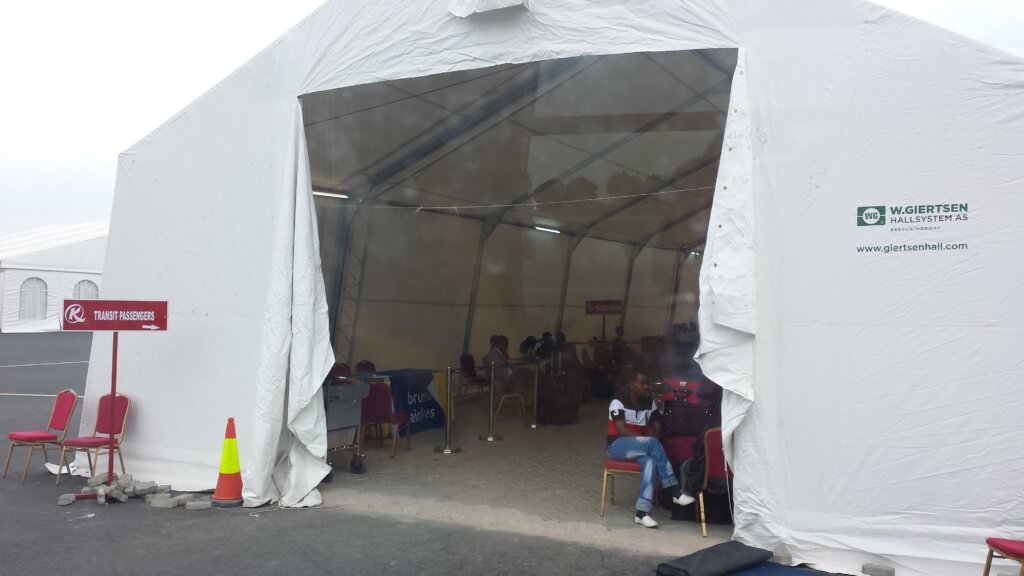From the Scorpion mine, we take the Loikitok road, driving for hours through typical African rural landscapes.
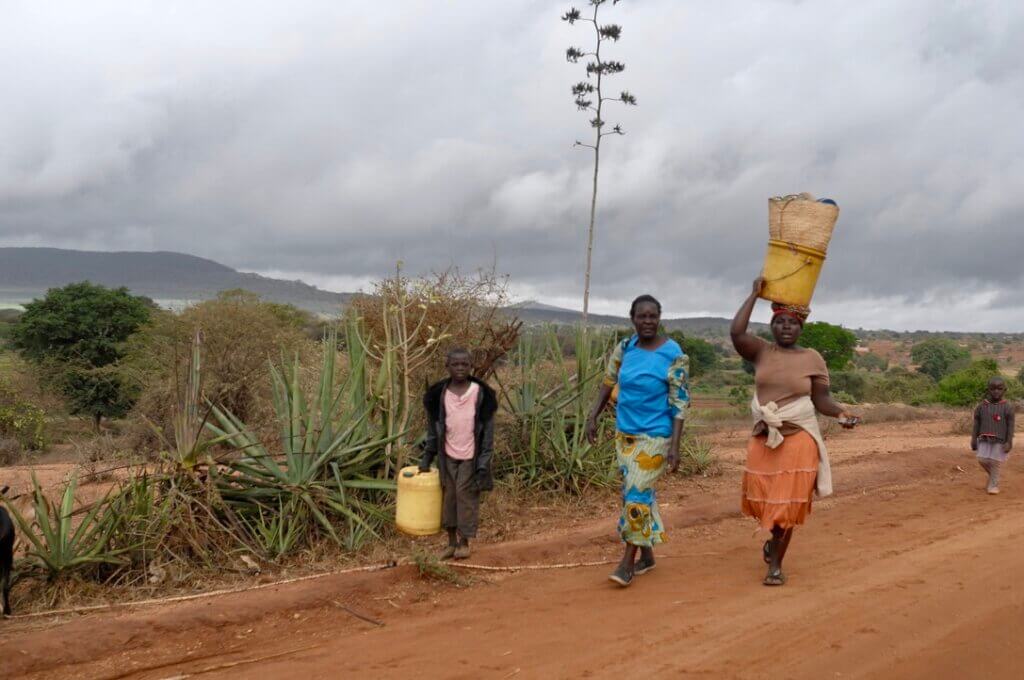
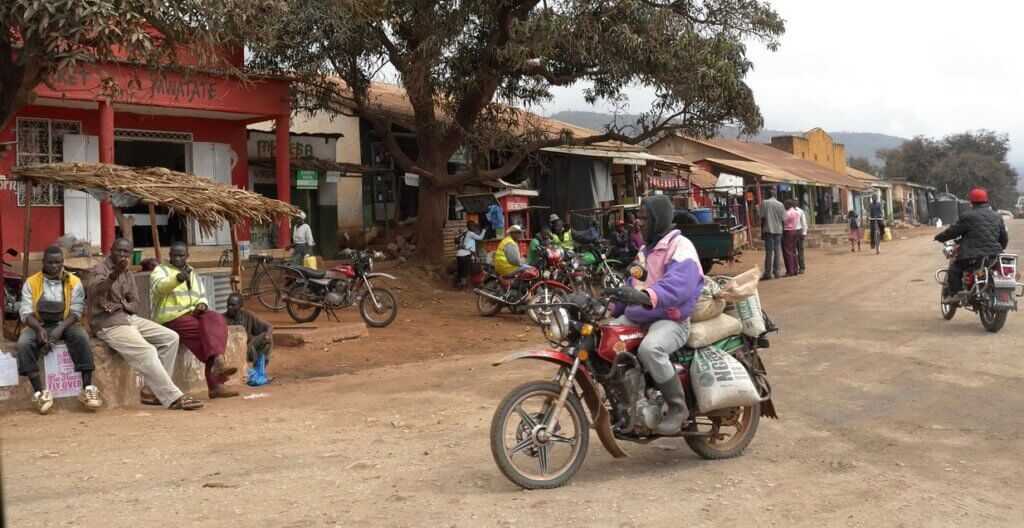
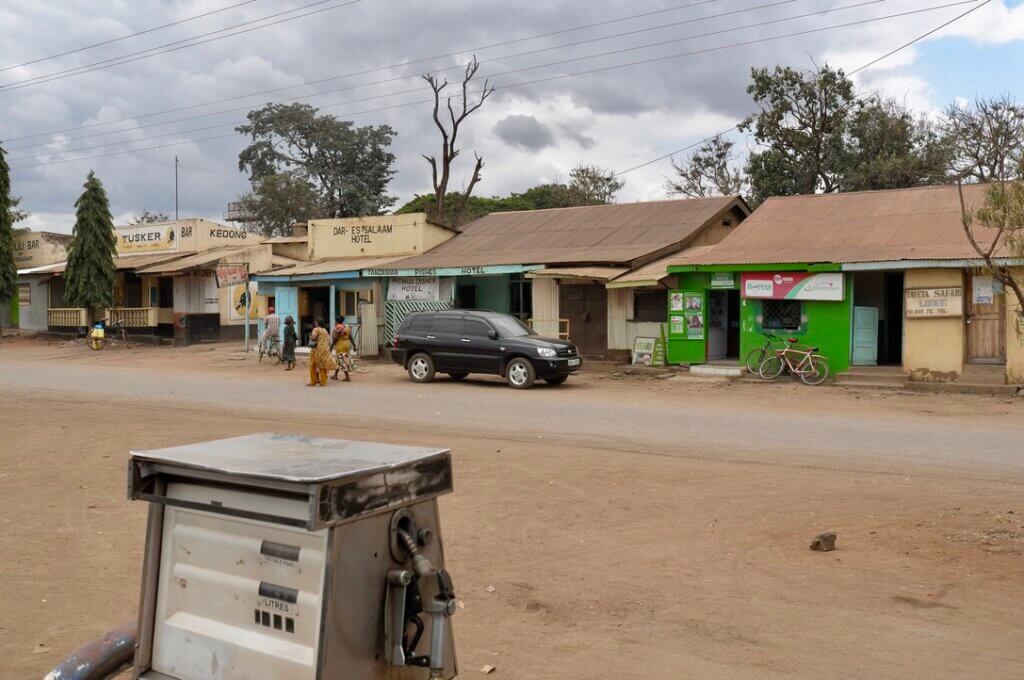

A family's African Odyssey
From the Scorpion mine, we take the Loikitok road, driving for hours through typical African rural landscapes.



Our friend’s mine manager meets us at the Taita Hills Lodge to guide us to the mine’s secret location in the Tsavo region, a two hour drive away through small villages, plantations and bush country. The mine is located deep in the bush, with several working pits scattered over a large area. The camp has neither running water nor electricity but it is a little piece of paradise in the bush, with pretty flower beds, neat little stone cottages and a tree house.
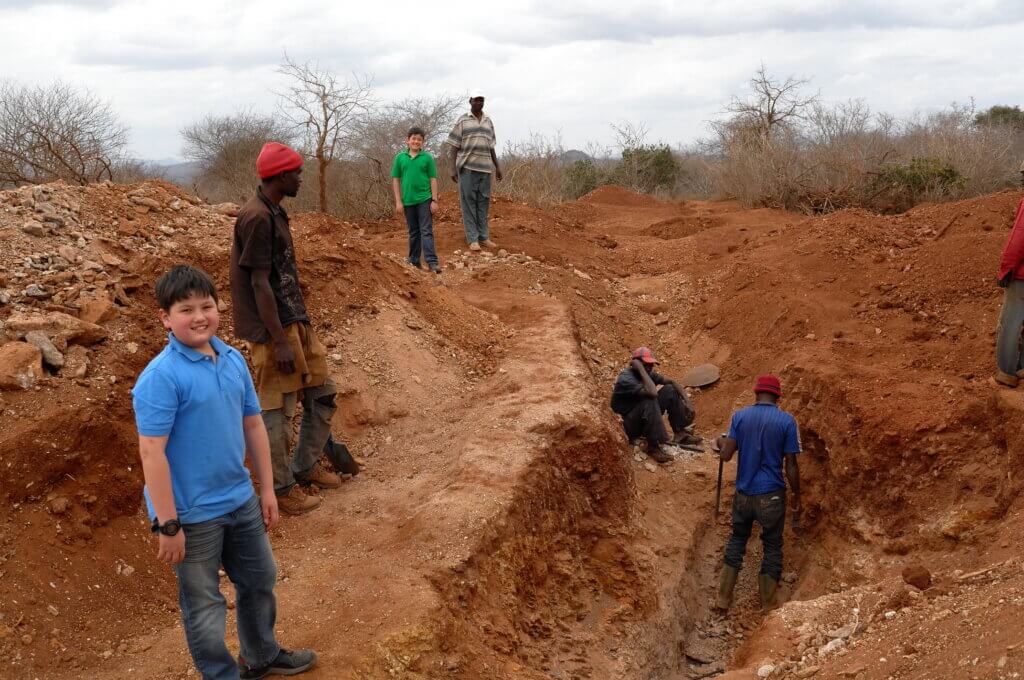
After exploring several of the pits, we are treated to a succulent Kenyan dinner and spend a peaceful night at the camp, only interrupted by the sounds of the bush. The boys spend the night in the tree house which, when not inhabited by people, is occupied by a leopard and her cubs.
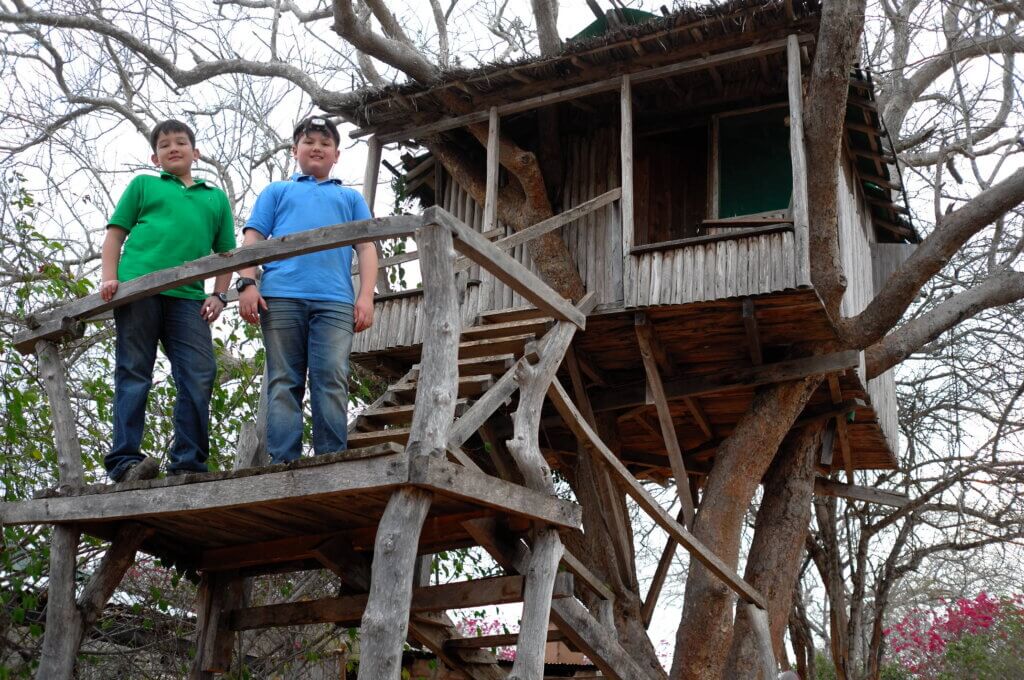
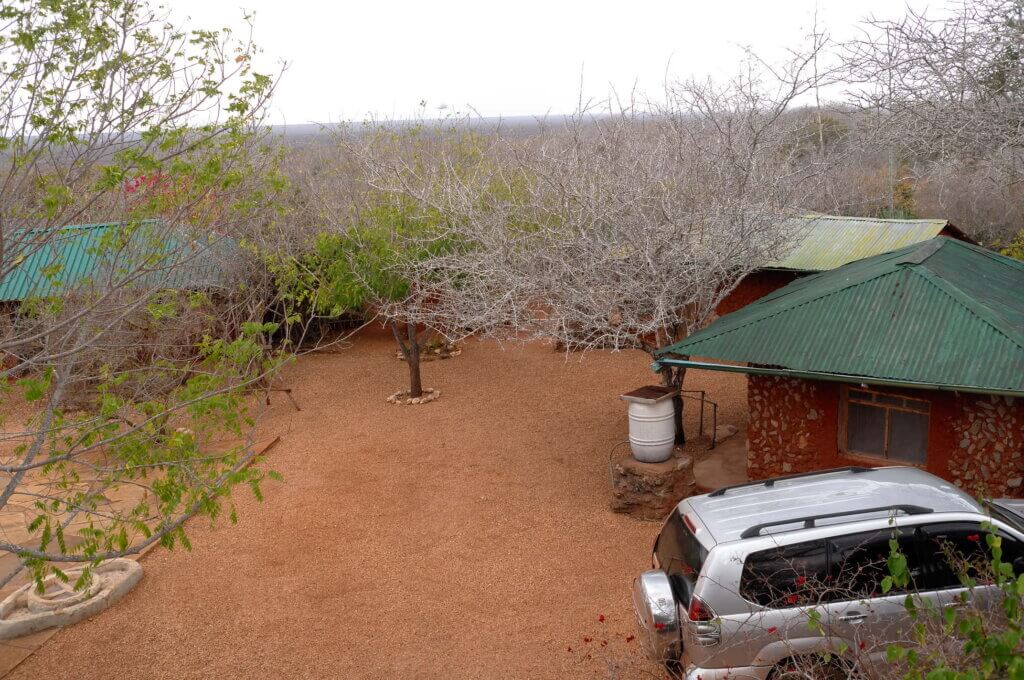
We leave the Maasai Mara on August 26th for a brief watering stop in Nairobi, which is supposed to be followed by a journey to Mombassa on the night train, also called , in Victorian times, the “lunatic express” when the Nairobi to Mombassa section of the Uganda Railway was being built in 1913. Perhaps that name was related to the engineering complexity of building a railroad across Africa’s great Rift Valley. Or perhaps it was because of the “Man Eaters” of Tsavo, the two lions who crept into the camp every night and dragged a worker out into the bush to eat him. The lions were finally shot after they had devoured 138 workers.
Anyhow, we decide to ignore the puzzled looks we keep getting from locals upon us telling them that we are going to Mombassa by train (well, I suppose the 15 hour train journey compared to the six hour drive or one hour flight must have had something to do with it).
A few minutes before heading to the train station, we are told that the train has crashed into a car on the way in, killing three people and that – it might be “slightly delayed”. That is enough to shatter our hitherto unshakable resolve and we decide to spend the night at the Muthaiga Club in Nairobi, and to drive down to Tsavo the next morning.
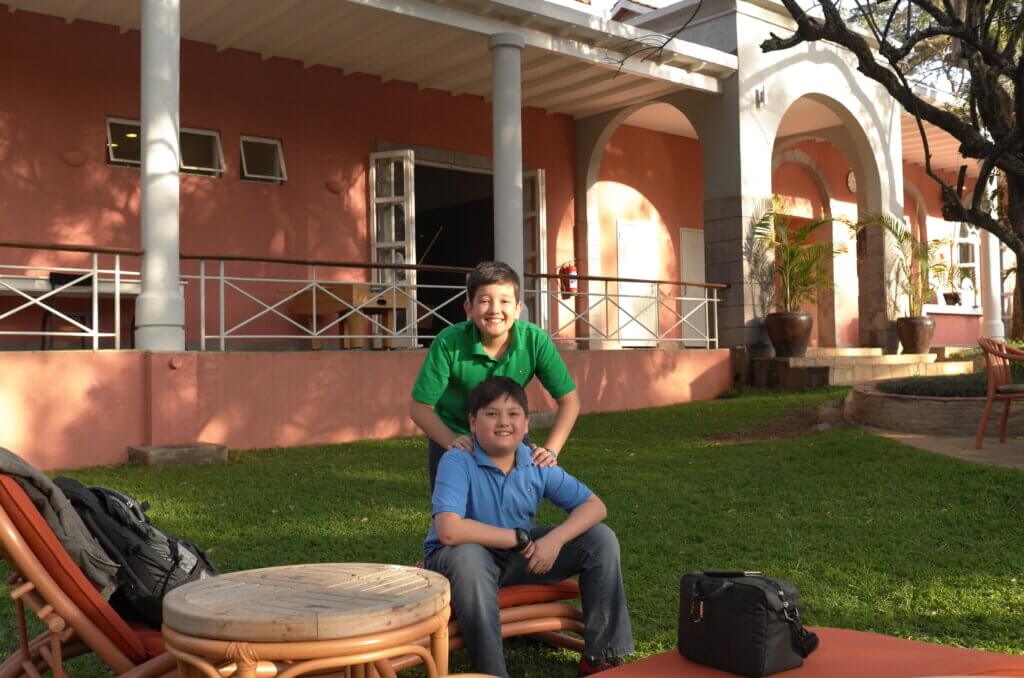
What would have turned out to be a nightmarish night on the Lunatic Express ends up being a very comfortable night spent in a cottage in the gardens of the Muthaiga Club – a place frozen in time, with antiquated rules which have not changed since its founding in 1913. No hats in the lobby, no ladies allowed in the “gentlemen’s bar” except on New Year’s eve etc.
The Great Migration is an almost supernatural phenomenon. Five million animals thundering across the Serengeti and the Mara plains in search of better grazing, as if guided by an invisible hand. We witnessed 10,000, maybe more, wildebeest crossing the Mara River like an irresistible force. A flow of dark energy, undulating over the river and emerging on the opposite bank to scatter like so many primal demons.
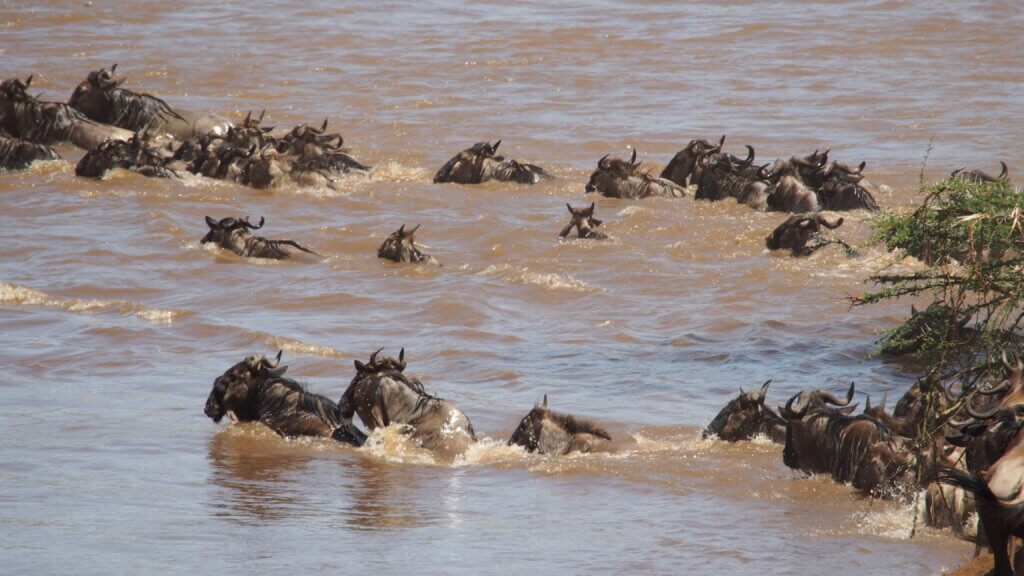
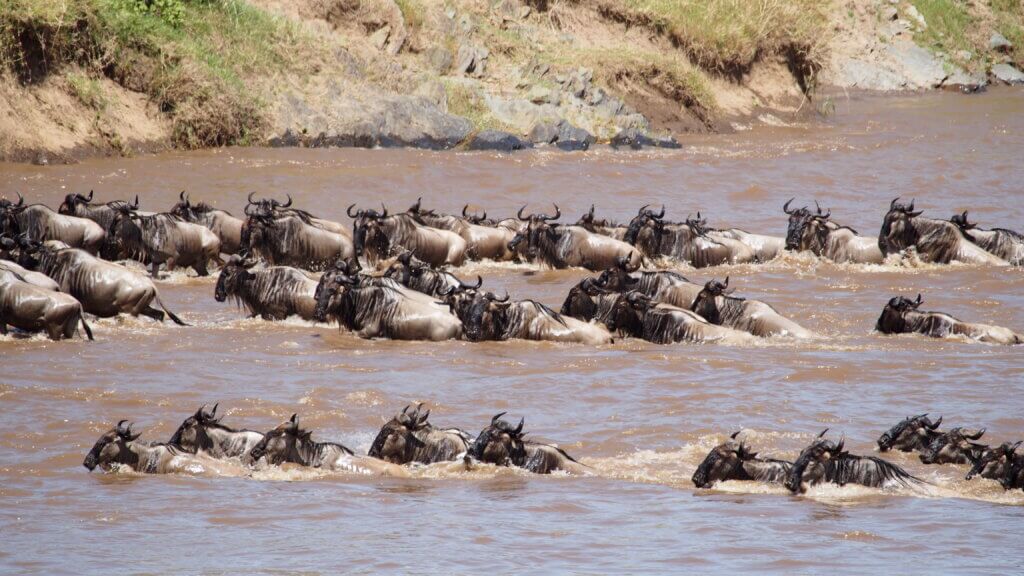
On the drive from the airstrip to the Nkorombo Camp, we see lions within five minutes. This will be an oft repeated pattern. The Mara is teeming with animals, more than we have ever seen before. They ignore the mechanical beasts we ride in and wander nonchalantly around us.
This is probably the closest to the Garden of Eden we will get. I wonder whether that is what the “developed” world looked like before it developed.
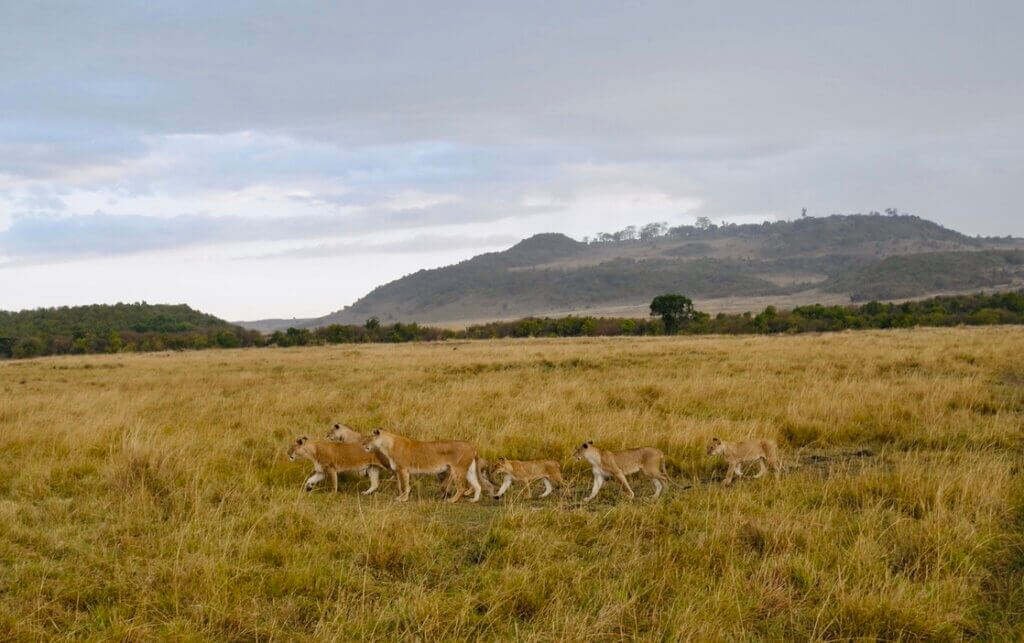
In the afternoon, we get caught by torrential rain. When it stops, the water collected in the vehicle tracks criss crossing the plains, illuminated by an ephemeral rainbow, then the vanishing rays of the sun looks like the calligraphy of a giant artist.
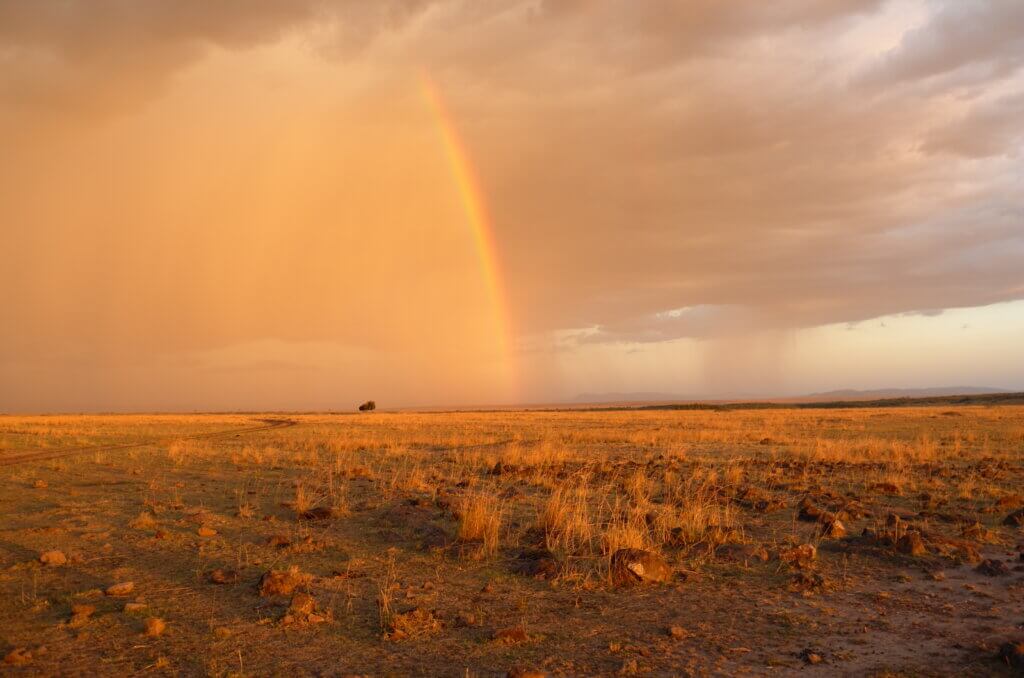
Andre went for an early morning run today. The only white guy around among groups of workers getting off their matatus and school children walking to school. It suddenly dawned upon me, as I was getting effortlessly overtaken by young children late for school, that I was in the homeland of the world’s top long distance runners !
Nothing quite like that to exacerbate one’s feelings of inadequacy!
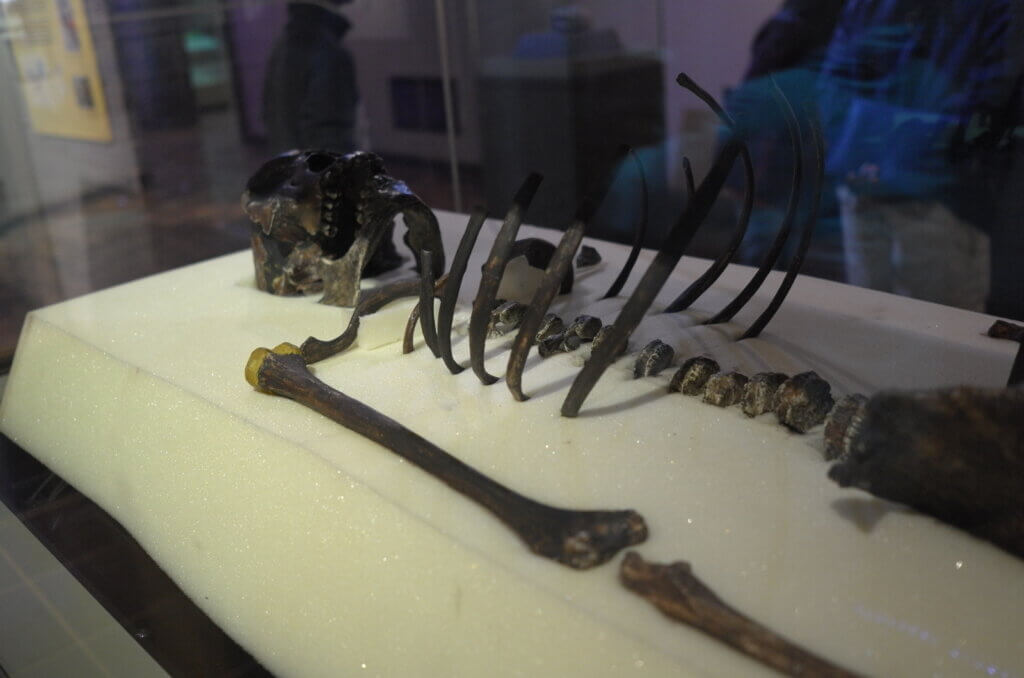
We then had the pleasure of meeting Turkana Boy, at the Nairobi National Museum. Discovered on the shores of Lake Turkana, in northern Kenya by Richard Leaky and Kamoya Kimeu, the 1.6 million years old homo erectus is the world’s oldest known direct ancestor of Modern Man. Another humbling experience which made us realize of how little significance our short (but no longer so brutal…) lives are.
Nairobi appears on the brink of an economic miracle. While Langata reminds me of Greenwich, in Connecticut, with its leafy avenues, large houses at the end of long driveways, downtown Nairobi feels like Shanghai a few years ago (including the ubiquitous Chinese construction companies).
New condominiums and shopping malls are sprouting up everywhere. Parts of the city feel like a giant construction site. And, of course, real estate prices are sky-rocketing (reportedly the highest increase in the world). This is a city on the cusp of bursting into the “economic miracle” club.
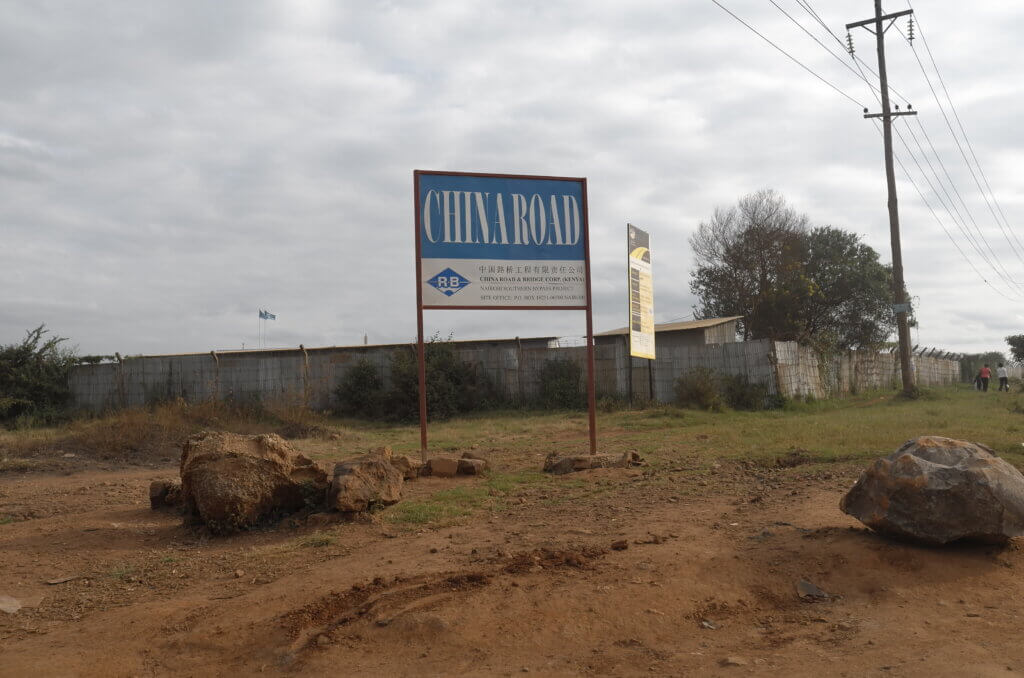
Later, on a visit to our friend’s office in town, we learn that he employs an “artist in residence” (our friend’s activity is completely unrelated to art). An employee for 42 years, all he does is create wonderful paintings of whimsical African landscapes.
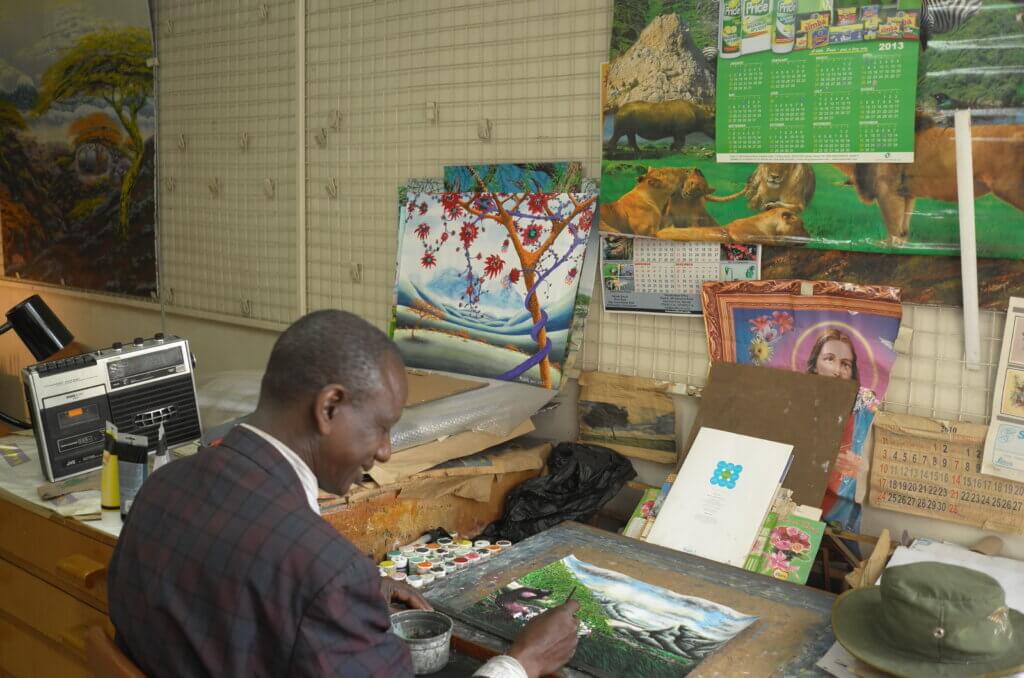
Nairobi National Park is the only national park in the world which is adjacent to a city. People looking out of their windows might (at a push!) be able to see lion, zebra and buffalo roaming the savannah.
With the city expanding, the park is slowly being surrounded and the last migration corridors to the Maasai Mara are closing…
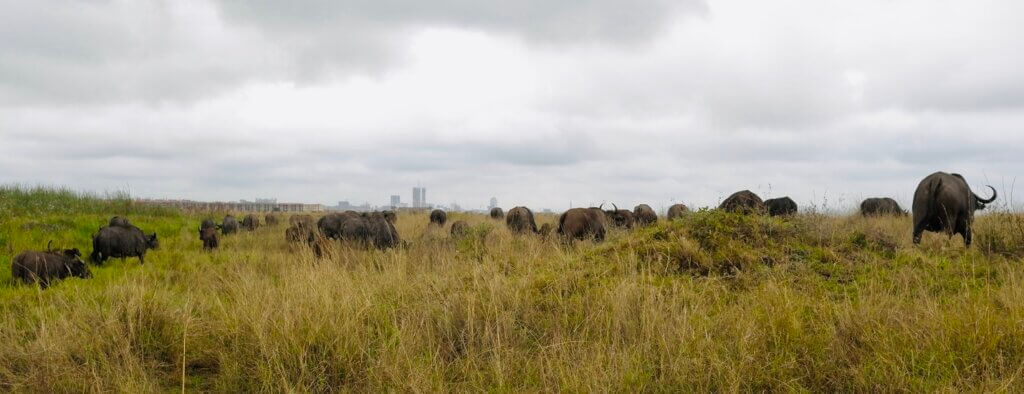
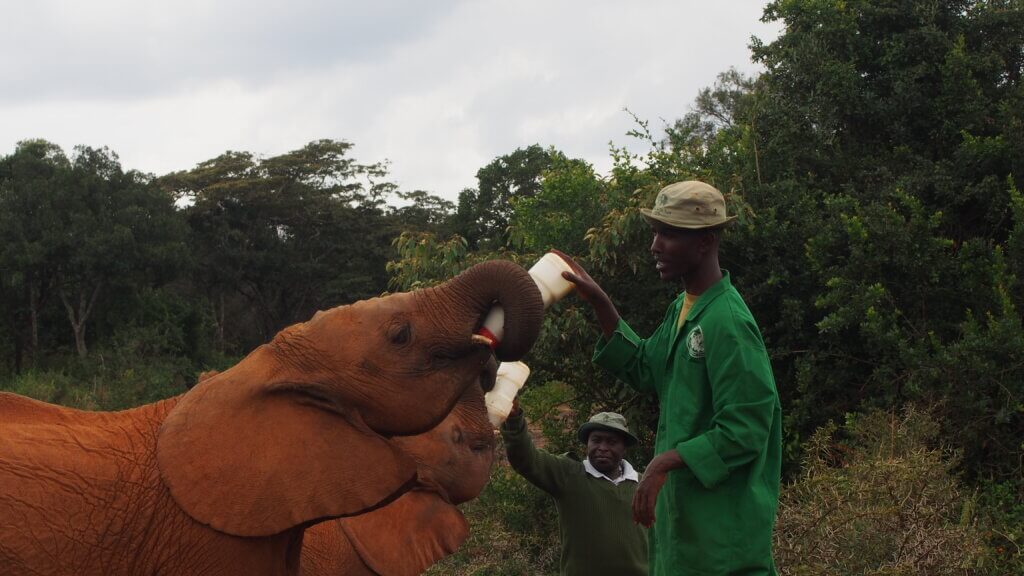
A first day spent in our friend’s house amidst lush gardens in the leafy Nairobi suburb of Langata. Gathered around the fireplace to keep the cold humidity of the cool Nairobi winter, we feel almost at home.
The night was peaceful, only disturbed by the cries of shapeless night creatures.
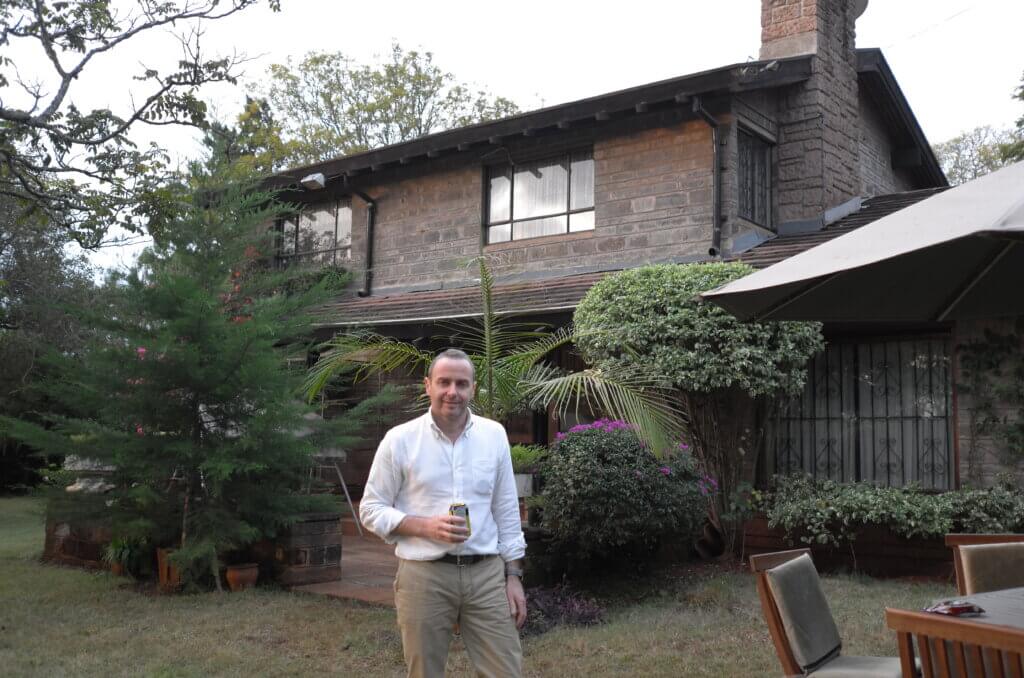
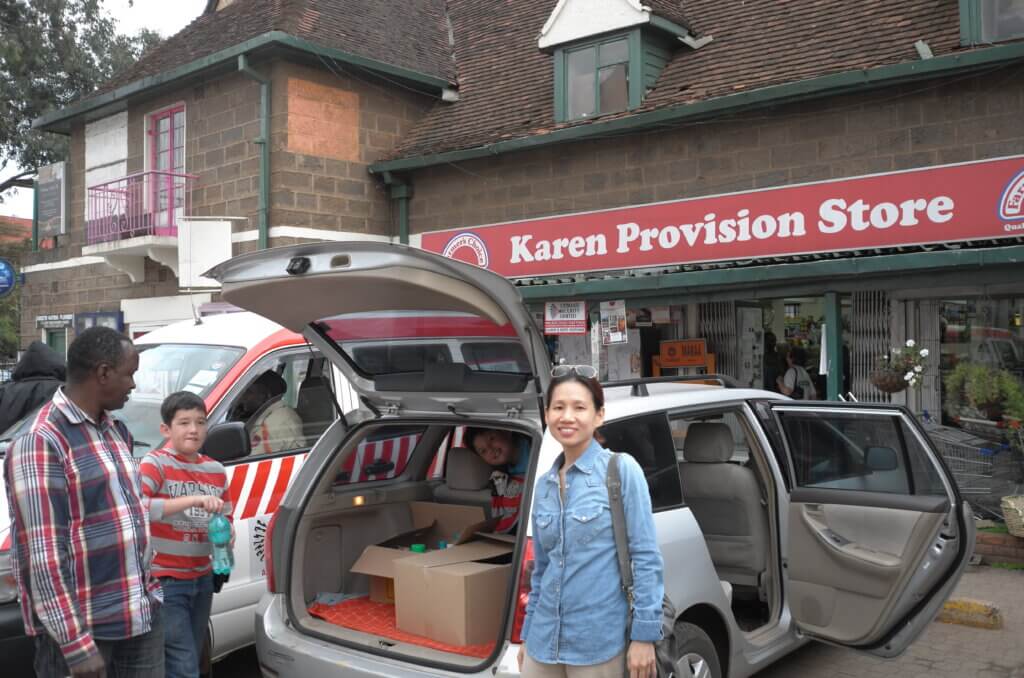
Our African Odyssey started at Jomo Kenyatta airport, with tents set up on the runway to replace the arrival hall which had burnt down…
